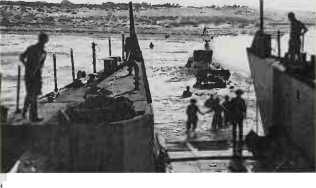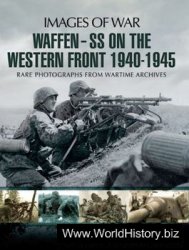Serchio, German offensive (December 26—30 1944). LI Mountain Corps (Feuerstein) mounted a spoiling attack with one division against the 92nd US (Negro) Division, holding the Serchio Valley on the quiet Western sector of the Gothic Line. The 92nd Division collapsed. 15th Army Group (Clark), fearing a repetition of the Ardennes offensive, rushed troops over from the Bologna front. Having achieved his limited objectives, however, Feuerstein withdrew.
Seria see Brunei revolt.
Serre see somme, battle of the
(l916).
Sevastopol, Battle of (1942). The collapse of the Soviet defence lines on the Perekop isthmus in October 1941 allowed von Manstein’s Eleventh Army to occupy the Crimea and lay siege to the naval base of Sevastopol. The strength of the defences precluded a rapid assault, but in December a German breakthrough was only averted by the deployment of Soviet reinforcements transported into Sevastopol by the Black Sea Fleet. By May 1942 the garrison had swollen to 106,000. To break into this heavily fortified position, Manstein employed a powerful siege. The final assault was launched on June 7 with the main attacks in the north by LII Corps and in the southeast by XXX Corps. Slowly the defensive perimeter was pushed back nearer Sevastopol itself and on the 26th the sea link with the outside was closed to supplies and reinforcements. On the 30th, Stavka’s orders for the evacuation by air and submarine of key personnel were announced, but German control of sea and air made escape impossible for most of the garrison. When Sevastopol fell on July 3, the total of Soviet prisoners was some
120,000. MS.
Seventh Air Force (US). Originally called the Hawaiian Air Force, the US Seventh Air Force fought mainly in the Central and Western Pacific after mid-1943. Its B-24 and B-25 bombers supported the offensives in the Gilberts, Marshalls and Marianas and, by July 1945, were attacking the Japanese home islands from Okinawa.
Seventh Armoured Division
(British). World-War-II nickname “the Desert Rats”; their divisional sign incorporated the jerboa, a North African rodent, perhaps reflecting the division’s “darting and biting” tactics as part of O’Connor’s Western Desert Force during the Libyan offensive of early 1941.
Seventh Fleet (US). New name, from February 1943, for South West Pacific Force, the forces involved in the amphibious campaign in that area. Postwar, this title has been used for the US fleet operating in the western Pacific.
Shaho river, Battle of (October 5—17 1904), Russo-Japanese War. Retreating north after the Battle of Liaoyang, Kuropatkin’s 200,000 Russians (losses 40,000) turned to face Oyama’s 170,000 Japanese (losses 20,000) along a 40-mile (64km) front. The battle was stalemated by severe weather.
SHAPE (Supreme Headquarters Allied Powers Europe). The hq
Of SACEUR. Set up at Rocquencourt near Paris in 1951, it was transferred to Casteau near Mons in 1967. An international hq with officers from the armed forces of every NATO country.
Shaposhnikov, Marshal of the Soviet Union Boris Mikhailovich (1882-1945). Russian. A noted strategist - cos, 1928-31, 1937—40,1941-42-Shaposhnikov was one of the few senior Red Army commanders to survive the purges of 1937-38. His advocacy of defensive policies is believed to have considerably influenced Stalin until cl941.
Sharon, Gen Ariel (“Arik”) (b. l928). Israeli soldier and politician. See ARAB-ISRAELI WARS.
Sharp, Adm Ulysses S Grant (b. l906). US. Promoted from c-in-c of the Pacific Fleet to c-in-c of the Pacific Command on June 30 1964. He was in charge of operations by the Seventh Fleet against North Vietnam and Laos and of the American build-up in the Vietnam War. A strong supporter of bombing the North, in 1967 he demanded an end to operational restrictions that required selection of individual targets and application of steadily increasing pressures against target “systems”.
Sheffield. British Type 42 destroyer of 4,100 tons full load. Hit by Exocet missile launched from Super Etendard on May 4 1982, during the Falklands War. At the time, Sheffield was on radar picket duty but not at full alert. Twenty-one of her crew were killed and many more injured. This was the first British warship lost to enemy action since 1945 and news of the ship’s loss came as a grave shock to the British public.
Sherman (M4). American medium tank introduced 1942. 33 tons, 75mm gun. Firefly, a variant in British service, mounted a 17-pounder gun. See also tanks.
Shinano. Japanese aircraft carrier. Laid down as a Yamato-class battleship; converted to an aircraft carrier while building; launched October 8 1944. Largest carrier of World War II: 70,755 tons fully loaded; 872ft (266m) overall
Length; 840-ft (256m) armoured flight deck. A “supply” carrier, possibly a mobile base for bombers carrying ohka piloted-bombs, she carried only 47 operational aircraft. On November 28 1944, with work on her watertight compartments and pumps incomplete, Shinano (Capt Toshiro Abe) began her maiden cruise from Tokyo Bay. At 0310 hours next day, she was badly holed by torpedoes from the submarine uss Archerfish. Abe attempted to hold his course, but his inexperienced crew was unable to control flooding and at 1055 hours she sank, killing Abe and 500 of his 1,400-strong crew. Her period of commission, some 17 hours, was the shortest of any major warship. RO’N.
Shinyo and Maru-ni. Japanese suicide weapons: one - or two-man explosive motorboats - typically cl9ft (6m) long; c5501b (250kg) impact-fuzed warhead; maximum range cl20 miles (190km) at 26kts - extensively deployed by Navy (shinyo) and Army (maru-ni) against US landing ships and escorts in the Philippines, Iwo Jima and Okinawa, 1944-45. They sank at least 10 minor warships and badly damaged several others.


Wr
Shoho. Japanese aircraft carrier. Converted from auxiliary in 1941; sunk at Coral Sea, 1942.
Short Seaplane, Admiralty Type
184 (Br, WWI). Two-seat maritime patrol. Prototype to rnas April 21 1915. First wartime air-launched torpedo attack August 12 1915. Effectiveness improved by progressive engine changes; a few flown as single-seat bombers. Folding wings permitted operation from small seaplane carriers. A few operational in anti-Bolshevik operations 1919. Production, over 945. One 225/240/265hp Sunbeam or 240hp Renault engine; max. speed 85mph (137kph); one 0.303in machine gun, one 14in torpedo or 5201b (263kg) bombs.
Short Take-Off and Vertical Landing (STOVL). The normal form of operation of so-called v/ STOL (Vertical/Short Take-Off and Landing) aircraft with vectored thrust jet engines. Such aircraft can only carry large loads of fuel and weapons if they use the lift of their wings as well as of their engines in take-off. A short takeoff run is thus normally required, enhanced in ships by the use of a “ski-jump” ramp. Vertical landing is, however, normal. The only true STOVL aircraft currently operational is the Harrier, used by the British raf and Royal Navy, the US Marine Corps, the Indian Navy and the Spanish Navy. The Soviet YAK-36 “Forger” naval flghter has separate lift engines and is more a Vertical Take-Off and Landing (vtol) aircraft, but its successor, the YAK-41, will be capable of STOVL operation with ski-jump. The vectored thrust engines of the Harrier family give high manoeuvrability in dogflghts, although the success of the Sea Harrier in the Falklands War was largely due to superior missiles, stovl aircraft are currently all subsonic, as there are technical problems in combining vectored thrust with afterburning. EJG.
Short-Range Ballistic Missile (SRBM). A guided, ballistic missile with a range of less than about 500 miles (800km). Longer-ranged examples are now classed as short-ranged intermediate nuclear forces. “Battlefield” systems with ranges of less than 300 miles (500km) still deployable include the Western Lance and the Eastern SS-21 and Scud-B.
Shrapnel Corner. Frequently bombarded road junction near the Lille Gate, Ypres, 1914-18.
Shuri Castle and Shuri Line see
OKINAWA CAMPAIGN.
Sibuyan Sea, Battle of see leyte
GULF, BATTLE OF (l944).
Sicily, invasion of (July 10-August 17 1943). The first step towards the Allied invasion of Europe after the fall of Tunis. Alexander’s 15th Army Group

‘Down ramps” on the Sicilian shore
Comprised Eighth Army (Montgomery) with XIII Corps (Dempsey) and XXX Corps (Leese), and Seventh US Army (Patton) with II US Corps (Bradley). The Axis forces under Sixth Italian Army (Guzzoni) comprised XII Corps (Arisio), defending the west of the island, supported by 15th Panzer Grenadier Division, and XVI Corps (Rossi), defending the East, supported by the Hermann Goring Panzer Division.
Von Senger und Etterlin was the German Liaison Officer with Sixth Italian Army. He and Guzzoni wished to defend the coast lightly with their mobile divisions held well back for counterattack when the main Allied landings had been identified. Kesselring, c-in-c South, insisted on destroying the invaders on the beaches, because he doubted whether the mobile divisions would be able to move during daylight in the face of Allied air superiority. Kesselring had his way and the two German divisions were deployed at opposite ends of the island relatively close to the coast.
Operations fell into three phases. The landings took place between July 10-12. The invasion
Was preceded by airborne landings behind the beaches, which went awry due to high winds and inadequate air-crew training, but they confused Guzzoni. Montgomery landed on the southeast corner of the island, and took the port of Syracuse, vital for supply purposes, by evening. Patton met more resistance, particularly from Hermann Goring Division, whose counterattacks on July 11 were only repulsed with the help of naval gunfire. Allied bridgeheads were secure by the 12th.
The second phase (July 13-28) saw the Axis withdrawal to the Etna Line. Hitler had ordered the reinforcement of the island with 1st Parachute and 29th Panzer Grenadier Divisions, and with hq XIV Panzer Corps (Hube) to take command of all (Jerman troops. By July 13 he had concluded that Italian resistance had collapsed, and that it was only practicable for Hube to hold a bridgehead in the northeast corner of the island. Hube withdrew as slowly as possible to allow time for the preparation of the bridgehead’s defences - the Etna Line - running from coast to coast around the southern slopes of the volcano.
Patton advanced almost unopposed in the west, taking Palermo on July 22, and then turned east to advance on Messina along the north coast. Montgomery had to fight hard against stiffening German opposition as he thrust northwards up the east coast and through the central mountains. Both Armies were up against the Etna Line by July 23.
The Etna Line was breached and the Germans evacuated during the third phase (July 24-August 17). Bradley’s II US Corps, using four divisions, broke through on August 6 in fierce fighting along the coast road and at Troina inland, and then advanced on Messina helped by a series of amphibious left hooks. Leese’s XXX Corps with three divisions broke through in equally hard fighting through Agira, Centuripe and Regalbuto to Adrano on the western slopes of Etna which fell on August 3; and Dempsey’s XIII Corps, held up on the east coast just south of Catania, found German opposition slackening by August 5. The fall of Mussolini on July 26 had resulted in a German decision to evacuate




 World History
World History









